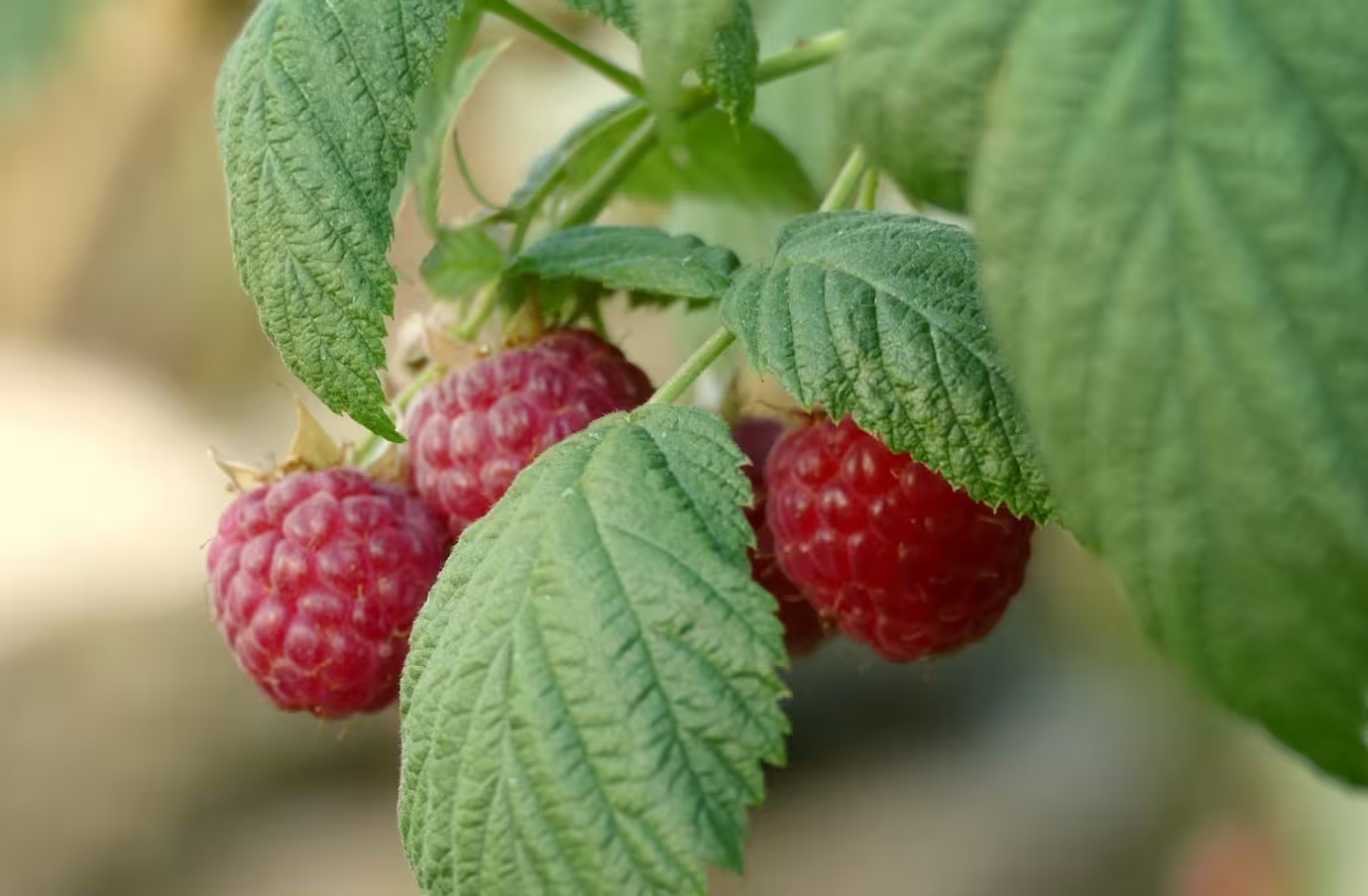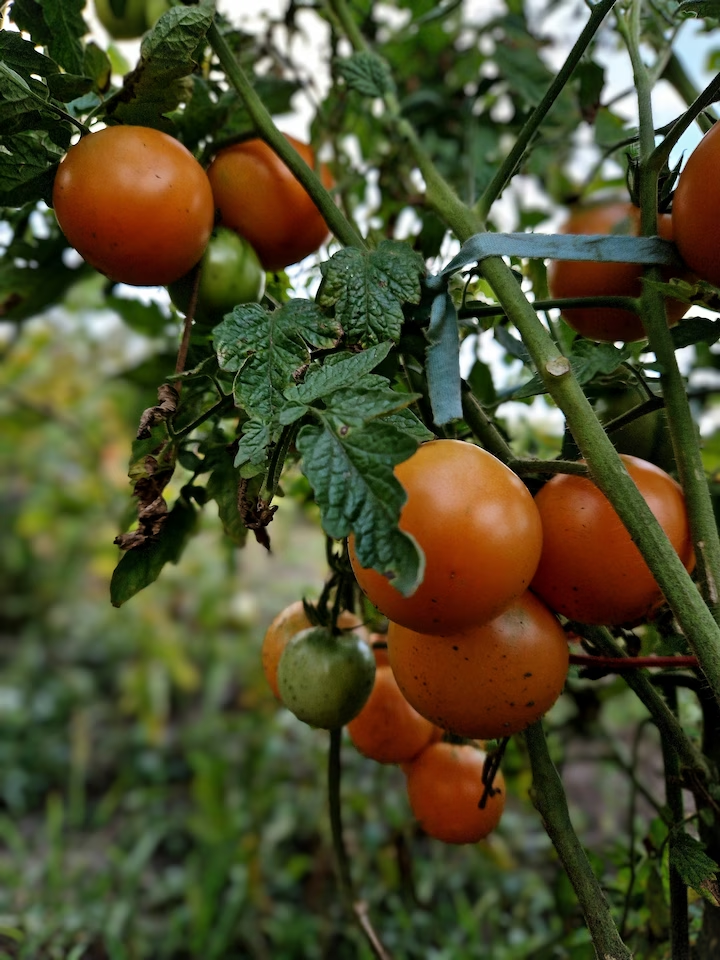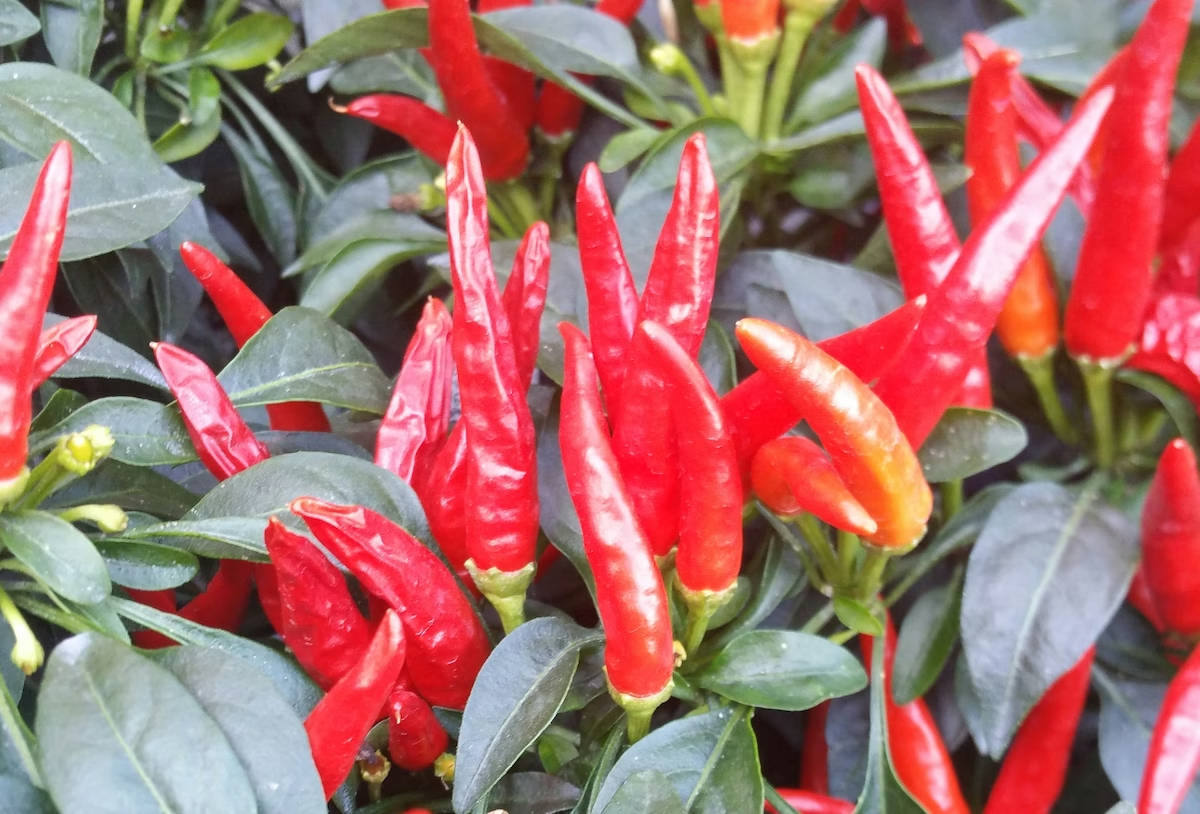Raspberry
Rubus idaeus
Raspberries are perennial plants producing aggregate fruits on biennial canes. Known for their sweet-tart flavor, they are popular fresh or used in jams, desserts, and sauces. Varieties include summer-bearing (fruit on second-year canes) and fall-bearing/everbearing (fruit on first-year canes in fall, and sometimes a smaller crop on the same canes the following summer).

Quick Information
Planting Calendar
Growing Guide for
1 Plant Dormant Canes
Plant bare-root dormant canes in early spring, as soon as soil is workable (typically 4-6 weeks before the last frost). Choose a sunny, well-drained location. Amend soil with compost. Dig a shallow, wide hole. Set canes slightly higher than they grew in the nursery, spreading roots out. Backfill soil, firm gently, and water well. Cut canes back to 15-25 cm (6-10 inches) after planting.
2 Install Support System
Install a trellis or support system at planting time or during the first growing season. This keeps canes upright, improves air circulation, makes harvesting easier, and prevents fruit from touching the ground.
3 Apply Mulch
Apply a 5-10 cm (2-4 inch) layer of organic mulch (like wood chips, straw, or shredded bark) around the base of the plants after the soil has warmed in spring. Mulch conserves moisture, suppresses weeds, and moderates soil temperature.
4 Water Regularly
Provide consistent water, ensuring plants receive about 2.5-5 cm (1-2 inches) per week during the growing season, especially crucial during flowering and fruit development. Water deeply at the soil level.
5 Fertilize Annually
In early spring, before new growth starts, apply a balanced fertilizer (like 10-10-10) or well-rotted compost around the base of the plants according to soil test recommendations or package directions. Avoid over-fertilizing.
6 Prune Summer-Bearing Varieties
For summer-bearing types: Immediately after harvesting is complete (mid-summer), cut all canes that bore fruit (floricanes) down to the ground level. Thin the new, current season's canes (primocanes) leaving the strongest 4-6 canes per linear foot of row. Tie remaining canes to the support system.
7 Prune Fall-Bearing Varieties (Fall Crop Only)
Simplest method for fall-bearing types: Cut all canes down to ground level in late winter or early spring (before growth starts). The plants will produce new canes that bear fruit in the late summer/fall of the same year.
8 Prune Fall-Bearing Varieties (Two Crops)
For two crops (smaller summer, larger fall): In late winter/early spring, remove only the top portion of canes that fruited the previous fall. These canes (now floricanes) will produce a summer crop on their lower sections. After the summer harvest, cut these specific canes to the ground. Manage the new primocanes for the fall crop.
9 Harvest Ripe Raspberries
Harvest berries when they are fully colored and detach easily from the central receptacle (core) with a gentle tug. Harvest every 1-3 days during the ripening period.
Explore More Plants

Tomato Fruit
Tomatoes are a warm-season favourite, prized for their juicy, flavourful fruits that elevate home cooking, fresh salads, and rich sauces. From tiny cherry tomatoes to huge beefsteaks, these versatile plants offer something for every gardener. Growing your own tomatoes gives the pleasure of harvesting sun-ripened, home-grown goodness straight from your garden, packed with taste you can’t find in the shops.

Chilli Pepper Fruit
Chilli peppers are the fiery fruits of the Capsicum family, known for their intense heat and use in various cuisines. They range in size, shape, and spiciness, adding a kick to dishes worldwide. They thrive in warm climates and require careful cultivation.

Sweet Pepper Fruit
Sweet peppers, also known as bell peppers, are a variety of Capsicum annuum prized for their large, mild-flavored fruits. They are used in a wide range of culinary applications, from salads and stir-fries to stuffed peppers and sauces. They require warm conditions and plenty of sunshine to thrive.